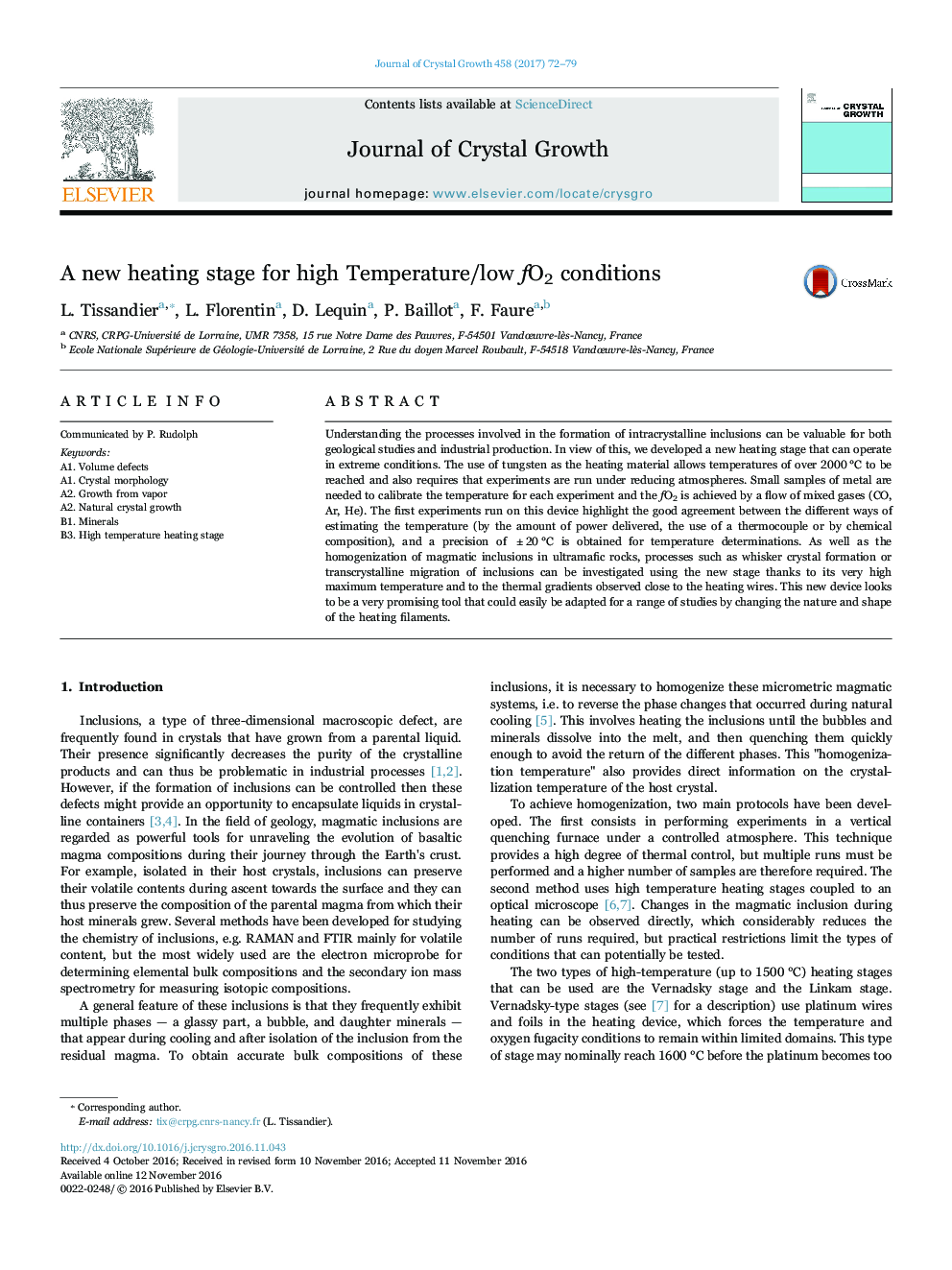| Article ID | Journal | Published Year | Pages | File Type |
|---|---|---|---|---|
| 5489793 | Journal of Crystal Growth | 2017 | 8 Pages |
Abstract
Understanding the processes involved in the formation of intracrystalline inclusions can be valuable for both geological studies and industrial production. In view of this, we developed a new heating stage that can operate in extreme conditions. The use of tungsten as the heating material allows temperatures of over 2000 °C to be reached and also requires that experiments are run under reducing atmospheres. Small samples of metal are needed to calibrate the temperature for each experiment and the fO2 is achieved by a flow of mixed gases (CO, Ar, He). The first experiments run on this device highlight the good agreement between the different ways of estimating the temperature (by the amount of power delivered, the use of a thermocouple or by chemical composition), and a precision of ±20 °C is obtained for temperature determinations. As well as the homogenization of magmatic inclusions in ultramafic rocks, processes such as whisker crystal formation or transcrystalline migration of inclusions can be investigated using the new stage thanks to its very high maximum temperature and to the thermal gradients observed close to the heating wires. This new device looks to be a very promising tool that could easily be adapted for a range of studies by changing the nature and shape of the heating filaments.
Keywords
Related Topics
Physical Sciences and Engineering
Physics and Astronomy
Condensed Matter Physics
Authors
L. Tissandier, L. Florentin, D. Lequin, P. Baillot, F. Faure,
